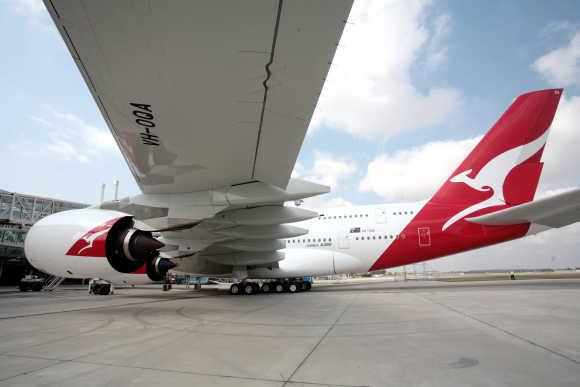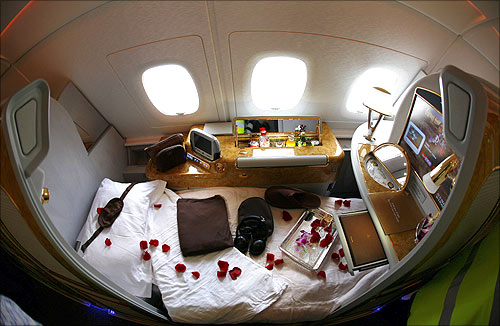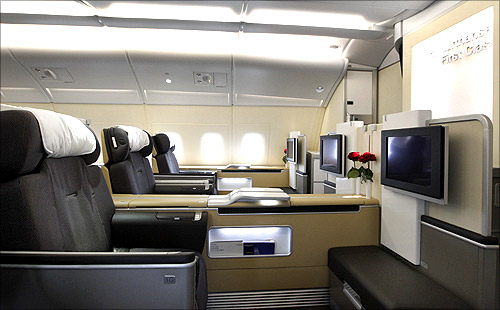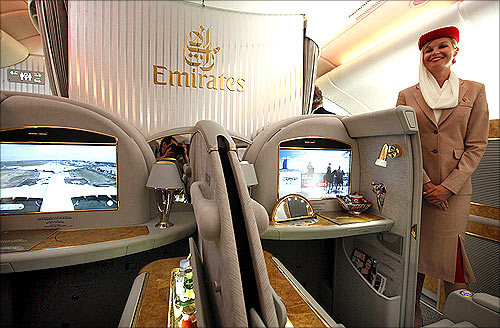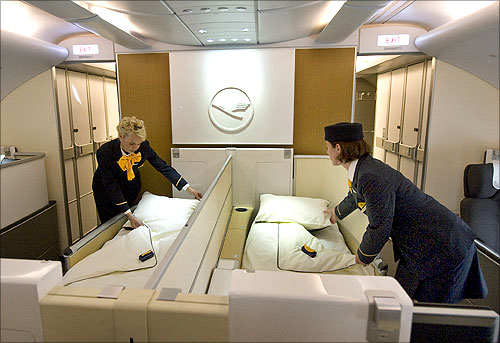 | « Back to article | Print this article |
World's largest aircraft A380 may fly to India soon
Germany's Deutsche Lufthansa AG and Dubai-based Emirates Airlines may soon be able to fly Airbus A380s, a super jumbo which is the world's largest passenger airplane, to India.
The civil aviation ministry is planning to relax rules in bilateral air service agreements (ASAs) by doing away with the 'aircraft type' clause. With this, international airlines will be able to fly any aircraft to India according to their strategies.
Click NEXT to read more...
World's largest aircraft A380 may fly to India soon
An ASA, signed between two countries, specifies the number of weekly seats or services and the point of calls (destinations from which airlines from other countries can fly).
Emirates and Lufthansa, which have been waiting for the civil aviation ministry's approval to fly A380s to India for the last couple of years, will benefit from the government's new move.
Click NEXT to read more...
World's largest aircraft A380 may fly to India soon
"The government has in principle agreed to do away with the 'aircraft type' clause in ASAs. After we relax, foreign airlines can bring in even A380s to India. Our only concern is that foreign airlines should fly to India the weekly number of seats allotted to them in the bilateral agreement," a senior ministry official, who declined to be identified, said.
Email sent to Lufthansa asking for comments did not elicit any response till press time.
Click NEXT to read more...
World's largest aircraft A380 may fly to India soon
However, an Emirates spokesperson said: "Emirates has always supported the introduction of the latest products and services to benefit the consumer."
"This is a welcome step by the government. Choice of aircraft type is a strategic one – depending on traffic volumes, seasonality of demand, competitive environment, operating cost per seat-km, airport infrastructure, etc. This choice is best left to market forces," said Amber Dubey, partner and head-aviation at global consultancy KPMG: "The government, however, should monitor the global airlines' adherence to bilateral limits so as to protect the interests of Indian carriers, many of whom have just recently ventured in the international arena."
Click NEXT to read more...
World's largest aircraft A380 may fly to India soon
In India, only three airports - Delhi, Hyderabad and Bangalore - can handle A380s.
According to a Delhi airport official: "IGI (Indira Gandhi International) airport is fully complaint to handle A 380 aircraft in terms of capacity of the runway, aerobridges, fire fighting response, ground handling facility and terminal capacity."
Click NEXT to read more...
World's largest aircraft A380 may fly to India soon
Experts believe the government's move will bring down the cost per seat and is expected to increase the profitability of airlines.
The maximum fuel is burnt during landing and taking off. If airlines could fly more passengers in one single aircraft, it would help them save on fuel expenditure.
Click NEXT to read more...
World's largest aircraft A380 may fly to India soon
This can also bring in competitive fares on international routes. The flipside could be the decrease in frequencies and less flexibility for the passengers.
With two full decks and a nominal design capacity of 525 seats in three-class configuration, the A380 offers airlines a wide number of options in terms of layouts.
Click NEXT to read more...
World's largest aircraft A380 may fly to India soon
Due to its huge size, many airports have had to expand their facilities to properly accommodate it.
Another concern expressed by experts is that due to its size, unless airlines work efficiently and airports have the required infrastructure, evacuation and turnaround time of this aircraft is comparatively more.
